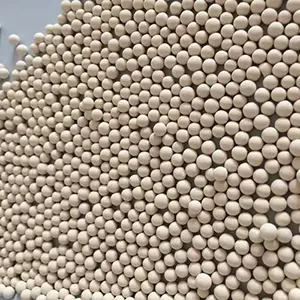Wax molecular sieve, designed for hydrocarbon processing, features a porous structure optimized to separate wax components from petroleum fractions. Its larger pores (8–10 angstroms) allow selective adsorption of long-chain hydrocarbons, making it ideal for refining processes where wax removal improves fuel quality. The packing of wax molecular sieve in industrial columns facilitates efficient separation, with its hydrophobic surface enhancing affinity for non-polar wax molecules.

Lithium molecular sieve, by contrast, incorporates lithium ions in its framework, altering both pore size and surface chemistry. With smaller, uniform pores (3–5 angstroms), it excels at adsorbing small polar molecules like carbon dioxide and water. This makes it valuable in gas purification, such as removing CO₂ from natural gas or biogas. Its high selectivity stems from lithium’s ionic interactions, strengthening bonds with polar compounds.
Regeneration requirements also differ: wax molecular sieve typically needs higher temperatures (250–350°C) to desorb heavy hydrocarbons, while lithium sieve regenerates at 200–250°C, conserving energy. Additionally, lithium molecular sieve exhibits greater thermal stability, suiting high-temperature applications, whereas wax sieve’s performance drops in extreme heat due to wax residue risks. These distinctions guide their use in specialized industrial processes.

